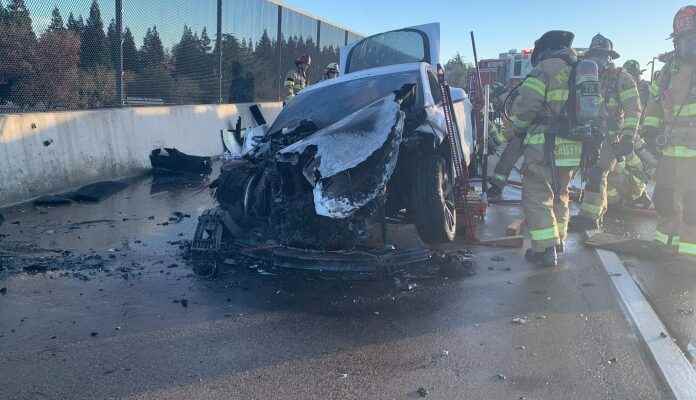A speeding carriage Tesla Model Scaught fire in Sacramento, California. The metropolitan fire department needed 6,000 gallons of water to put out the flames from the self-igniting battery on the highway.
While the cause of the fire has not been determined yet, no casualties were reported in the incident. Sacramento Metropolitan Fire Department, TeslaHe was following the specific instructions given by . However, they faced major problems to put out the battery fire as it continued to flare up again after the intervals.
Why Do EVs Burn?
Electric Vehicles use Lithium-ion batteries with high energy efficiency, high power-to-weight ratio and low self-discharge. These batteries perform well at high temperatures and are made from recyclable components. However, one of the biggest disadvantages of Lithium-ion batteries is the risk of burning.
According to a 2017 study by the National Highway Traffic Safety Administration, the United States department of transportation, the risk of fire in electric vehicles is significantly lower than in vehicles powered by an internal combustion engine. But the increase in the number of fire accidents in electric vehicles has prompted more research into the safety of electric vehicles.
A 2020 research paper on “Study of Battery Fires in Electric Vehicles” states that although the heat dissipation and hazard of an EV fire is comparable to that of a fossil fuel vehicle fire, once the onboard battery is involved in the fire, there is a greater challenge in suppressing EV fires. This is because the battery burned inside cannot reach the suppressor applied from the outside and can re-ignite without sufficient cooling. As a result, an excessive amount of extinguishing agent is required to cool the battery, extinguish the fire and prevent re-ignition.
What to Do in an EV Fire Incident?
According to an article published in the International Journal of Engineering Research & Technology (IJERT), special training and equipment are required to manage the fire hazard posed by EVs. Customers using EVs also need to be aware of the specific steps to take when dealing with spontaneous combustion.
In the event of an EV fire, it is recommended that you stop, pull over, and move away from the vehicle before calling emergency services. Drivers, passengers or bystanders should not breathe the fumes, vapors or gas emitted by the burning car and should stay as far away from the vehicle as possible.

The latest NFPA Electric Vehicle Emergency Manual contains more detailed instructions for dealing with vehicle fire accidents for both mainstream hybrid and electric cars from various manufacturers. Firefighting equipment manufacturers around the world are also working on technology and solutions to help combat the specific fire hazard posed by Electric Vehicles.
However, until the technology and tools are developed to put out EV fires, we unfortunately waste gallons of water trying to put out a battery fire.
